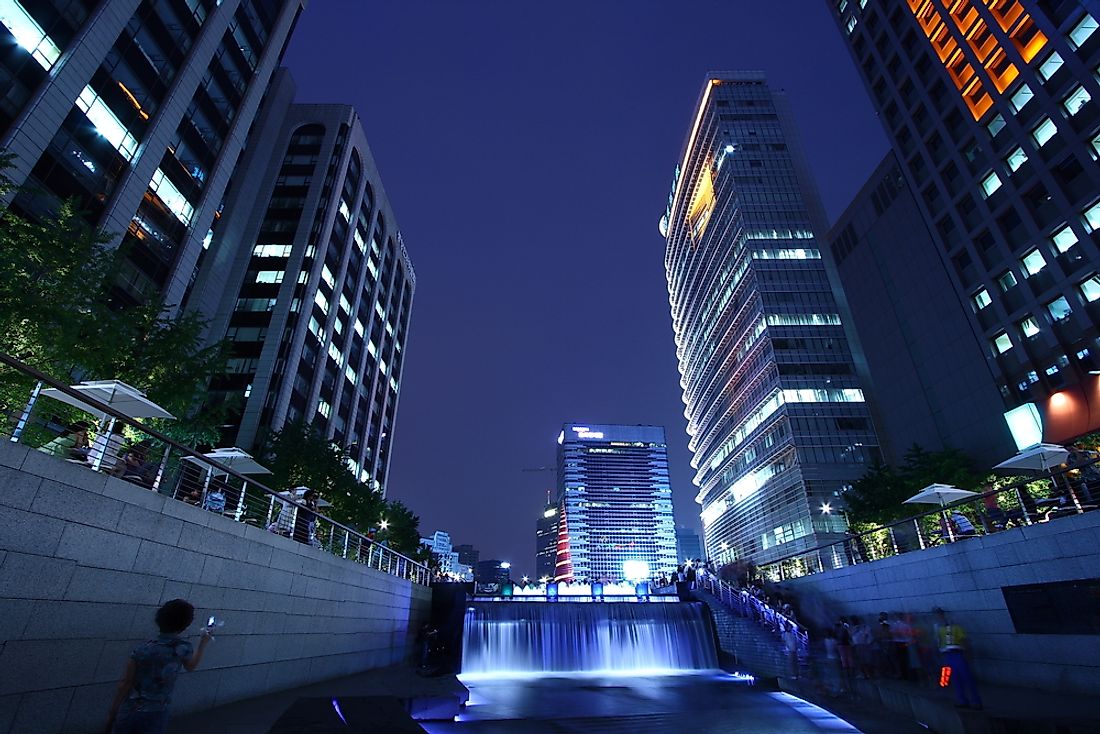The Cheonggyecheon Urban Renewal Project

Cheonggyecheon Urban Renewal Project
Situated in the heart of the city of Seoul in South Korea, the Cheonggyecheon has become a beautiful sight to behold after a great transformation from what was considered an eyesore within the city. The construction of the project occurred between 2002 to 2005 at a cost of over US$ 281 million. The Cheonggyecheon project runs from the west to east, downstream of Seoul. It is 8.4 km long and has become a model for urban renewal projects in the world. It is always open and brims with thousands of visitors every day. It has also become a preferred site for organizing events and installations of art.
History
The Cheonggyecheon was formerly a polluted river which experienced frequent flooding. Due to rapid urbanization, an elevated highway was built to cover the river. However, this highway began experiencing structural challenges which led to the metropolitan government restoring the river and destroying the highway. This action led to a very costly and heavy task of dismantling the highway and cleaning the river to make it what it is today. The benefits derived from the Cheonggyecheon urban renewal project is much more than its criticism. As such more countries in the world are adopting river restoration projects. These states include Singapore, the United States and Japan. The greatest benefit of these projects is the ecological and social sustainability.
Mayor Lee Myung-Bak’s Campaign Strategy
The Cheonggyecheon project was initiated by then-mayor Lee Myung-Bak as one of his electoral promises. At the time the area had become a health hazard and a breeding site for criminal activities. Most people detested what the Cheonggyecheon had become over the years. After taking office, Lee initiated the renewal project in spite of opposition from the former mayor Goh Kun. Many years later the project has become a great success.
Urban Renewal Benefits
The Cheonggyecheon today attracts at least 60,000 visitors daily. It has also led to a decrease in air pollution that was brought about by the sewer that was formerly in the area. The project has also improved economic development as it has become a tourist attraction site. It has also led to better transport infrastructure in the surrounding areas which has caused a business boom. This urban renewal project has also led to cooler temperatures and clean water in Seoul. It is also hailed as a flood relief channel.
Project Criticisms
In spite of the success of the Cheonggyecheon project, a few criticisms exist. One of these is that those with mobility challenges have complained of difficulty of access to the stream. In spite of the authorities providing lifts and free wheelchairs, the minority are disappointed that the original plan did not take care of their needs. Furthermore, the cost of maintaining the Cheonggyecheon project is very high as water has to be pumped from a nearby river all year. Also, the rising property pricing for the local habitats leading to high cost of living and working in the area is also a concern to many South Korean residents.











